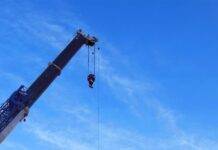
Safety Factor of Shackles
Introduction to Shackles
Shackles, commonly used in various industries like construction, maritime, and manufacturing, serve as crucial components in lifting and rigging operations. They come in diverse types and sizes, each catering to specific purposes. Understanding the safety factors associated with shackles is paramount to prevent accidents and ensure operational efficiency.
Understanding Safety Factors
Safety factors play a pivotal role in engineering and manufacturing. They signify the level of redundancy built into a system to handle unexpected loads or stresses, ensuring safety margins in operations. In the context of shackles, these factors are critical for determining the load capacity and stress tolerance.
The safety factor of shackles refers to the ratio between the breaking load or ultimate strength of a shackle and the working load limit (WLL) it is designed to handle. The WLL is the maximum load that should be applied under normal working conditions. The safety factor ensures that the shackle can handle unexpected stresses or overloads without failing. Typically, the safety factor for shackles is around 5:1, meaning the breaking load is about five times greater than the working load limit. This provides a margin of safety to account for variations in load, environmental factors, and potential stress concentrations.Factors Influencing Shackle Safety
The safety of shackles heavily depends on the quality of materials used in their construction and their structural integrity. The load capacity of a shackle and its performance under varying working conditions also significantly impact safety.
Types of Shackles and Their Safety Considerations
Different shackle types, including dee, bow, and screw pin shackles, possess distinct safety considerations. Understanding these differences is essential to ensure proper usage and avoid potential hazards.
Testing and Certification
Stringent standards and regulations govern shackle safety. Testing procedures, adherence to these standards, and certification requirements are pivotal for ensuring the reliability and safety of shackles.
Proper Usage and Maintenance
Following specific guidelines for safe handling and routine maintenance of shackles is crucial for their prolonged safety and functionality. Neglecting these practices can lead to potential failures.
Case Studies on Shackle Failures
Real-life incidents of shackle failures highlight the importance of adhering to safety protocols. Analyzing these cases offers valuable insights and lessons to prevent future mishaps.
Innovations in Shackle Safety
Technological advancements and innovations in shackle design contribute significantly to enhancing safety standards. These innovations reshape the industry, setting new benchmarks for safety.
Educational Initiatives and Training
Education and training programs are instrumental in disseminating knowledge about shackle safety. Access to resources and training can significantly mitigate risks associated with improper usage.
Global Perspectives on Shackle Safety
Comparing safety standards across different regions and fostering collaborative efforts for global safety enhancement are crucial steps toward ensuring universal safety measures.
Future Trends and Predictions
Anticipating future trends in shackle safety, including technological advancements and regulatory changes, is essential for staying ahead and continuously improving safety measures.
Conclusion
Shackles serve as indispensable components in various industries, emphasizing the critical need for ensuring their safety. Adhering to established standards, embracing innovations, and fostering educational initiatives are pivotal for enhanced shackle safety.
How To Calculate Crane Capacity According to Load
Web Sling Capacity Calculation
FAQs
- What factors determine the safety of shackles? Safety factors include material quality, load capacity, working conditions, and adherence to standards.
- How often should shackles undergo maintenance? Regular inspections and maintenance are recommended as per manufacturer guidelines or industry standards.
- Are there specific training programs for shackle safety? Yes, many organizations offer training courses focusing on safe shackle handling and usage.
- Can using the wrong type of shackle compromise safety? Absolutely, using an incorrect shackle type for a particular application can pose significant safety risks.
- What role do certifications play in ensuring shackle safety? Certifications validate that shackles meet specific safety standards, ensuring their reliability in operations.
























